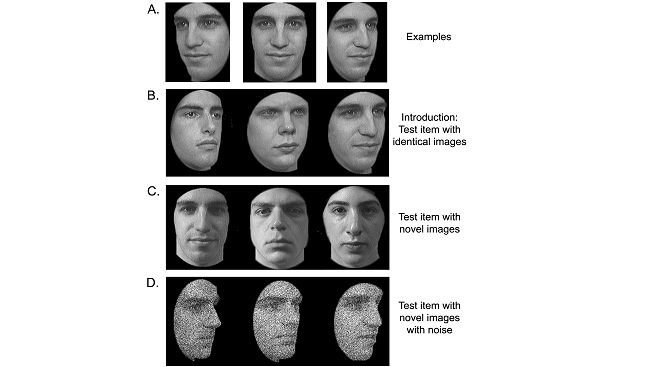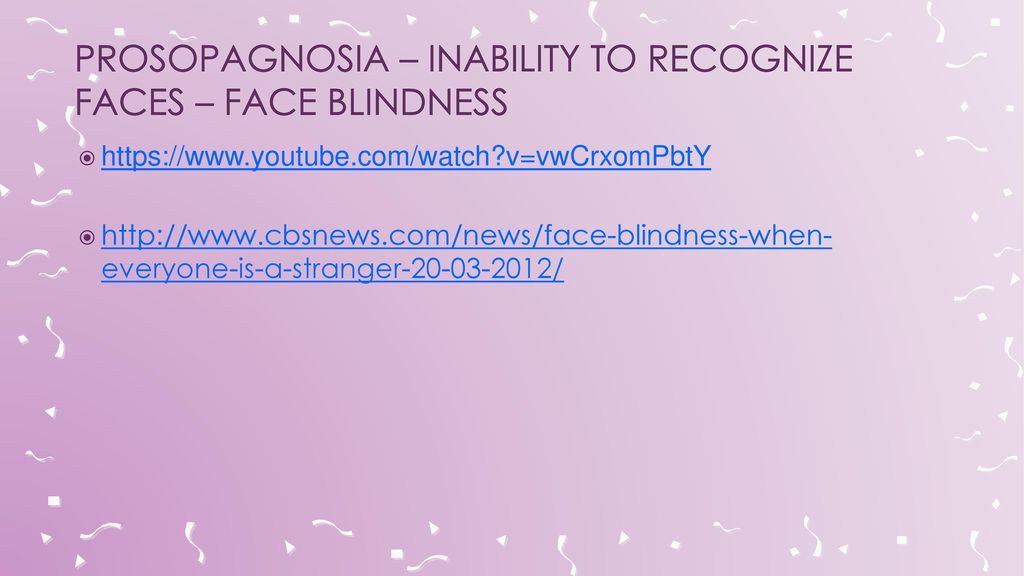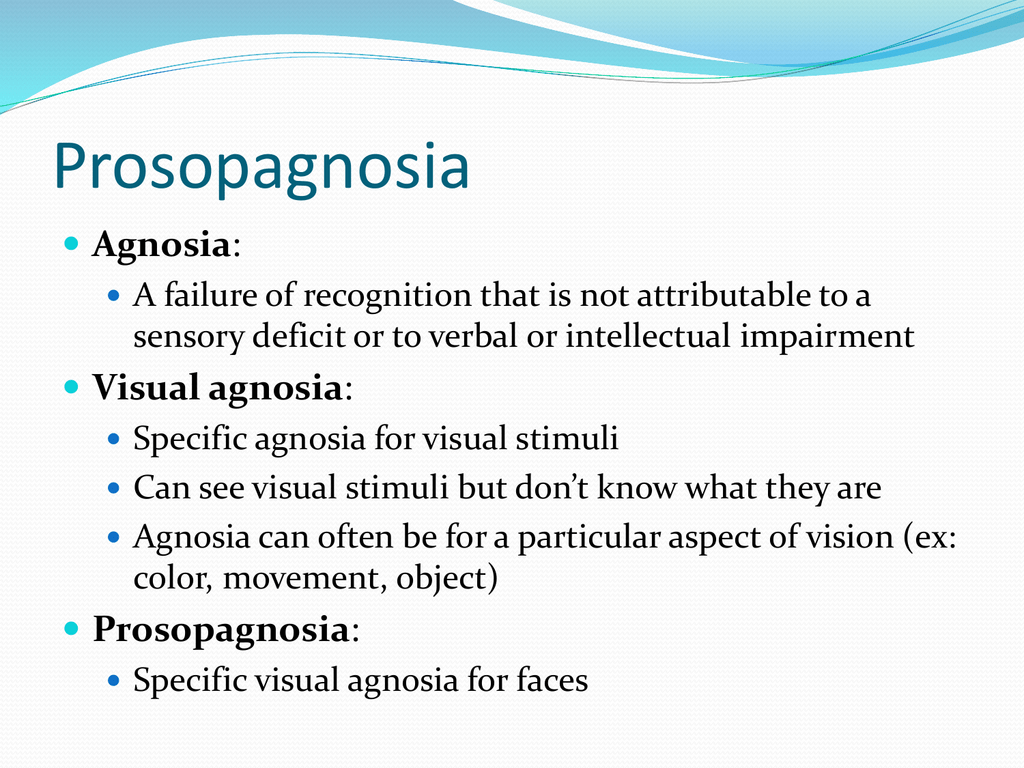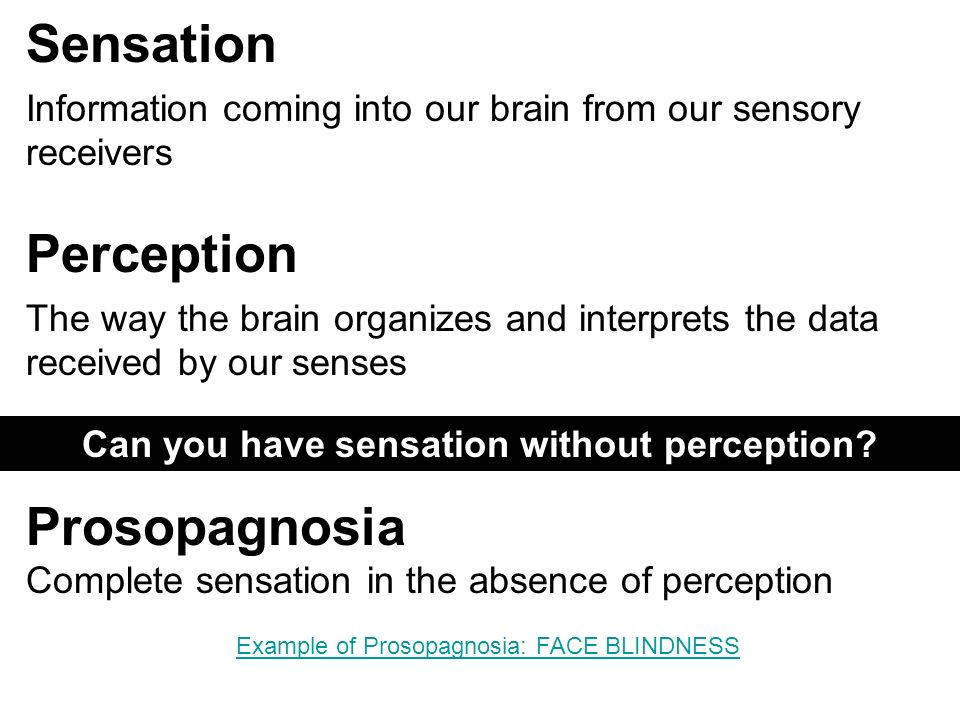While sensation is the process of sensory input arriving at the cerebral cortex perception is the brain making sense of this input. Perception is an experience that is unique to each individual whereas the initial input of sensation is usually the same for all people.

Face Blindness How The Brain Perceives And Sometimes Fails To Perceive Human Faces
Seeing is only one aspect of sensation which includes hearing touching tasting and smelling.

. One way to think of this concept is that sensation is a physical process whereas perception is psychological. Sensation and perception are two separate processes that are very closely related. Perception on the other hand is the top-down way our brains organize and interpret that information and put it into context.
You might want to think of sensation and perception as two ends of a continuum. In this example the difference between sensation and perception is illustrated. The sensation is more physical.
The physical process during which our sensory organs eg eyes ears nose among others respond to external stimuli is called sensation. Sensation is input about the physical world obtained by our sensory receptors and perception is the process by which the brain selects organizes and interprets these sensations. While sensation refers to the stimuli that comes through ones senses perception refers to how one sees those stimuli or how one understands those stim.
One way to think of this concept is that sensation is a physical process whereas perception is psychological. Sensing and Perceiving are two words mostly used in psychology regarding two different processes of the human brain. Experts are tested by Chegg as specialists in their subject area.
Illustrates the difference between SENSATION and PERCEPTION each blend into one continuous process. Sensations are things in our environment that are registered by the five major sensory organs. Sensation is the ability to see in this case but includes hearing touching tasting and smelling.
Sensation and perception are actually parts of one continuous process. Perception is how we interpret these sensations. Sensation is the process by which our sensory receptors and nervous system receive and represent stimulus energies from our environment.
We review their content and use your feedback to keep the quality high. Contrast sensation and perception and explain the difference between bottom-up and top-down processing. Face blindness- the inability to recognize faces--Even with prosopagnosia you can still have perfect vision.
What they can do is demonstrate if prosopagnosia is due to impaired encoding of the facial structure and therefore is an apperceptive variant or if such encoding is intact which would point to an. Prosopagnosia is a good example of how sensing and perceiving are connected but different. Sensation and Perception Before we can understand how the brain reconstructs our world using mental schemas its critical to learn how information from the world is first sensed and perceived.
Sensation happens when you eat. In other words senses are the physiological basis of perception. The process of integrating organizing and interpreting sensations.
The main difference between sensation and perception is that sensation is the process of sensing our surrounding using the five senses while perception is the process of interpreting the acquired sensations. The process of detecting a stimulus such as light waves vision sound waves hearing chemical molecules smell and taste heat or pressure touch. Perception is how we put the impulses received from our senses together so they make sense.
View the full answer. Up to 24 cash back This person has whats called prosopagnosia AKA face blindness This illustrates the difference between sensation and perception. The main difference between sensation and perception is that sensations are the passive process of obtaining information from the outside world to the body.
Sensation is what we see hear smell taste and feel. This is the basic difference between the two words. Sensation does not involve any organization combination or selection of stimuli.
Perception on the other hand is the active process of selecting organizing. For example upon walking into a kitchen and smelling the scent of baking cinnamon rolls the sensation is the scent receptors detecting the odor of cinnamon but the perception may be Mmm this smells like the bread Grandma used to bake when the family. In this video we lay the groundwork for future videos on sensation and perception that is how we sense and perceive using our eyes ears nose and so on.
2 Perception is more complex than sensation. Sensing vs Perceiving The difference between sensing and perceiving lies in the way the information is processed. It entails the simple awareness of various stimuli.
Perception helps us make sense of our sensations. Perception gives meaning to what we sense and can be said it is a mix of sensations with ideas past experience and connections with objects or concepts. Sensing and perception are fundamental psychological processes of how we acquire information.
Prosopagnosia or face blindness is what this person has. It is a fusion of sensation with ideas. Sensation and perception are inter-related.
3 Perception involves selection of stimuli and combination of them into a pattern. Tests of face perception that is the ability to perceive differences between faces do not establish the diagnosis of prosopagnosia. For example upon walking into a kitchen and smelling the scent of baking cinnamon rolls the sensation is the scent receptors detecting the odor of cinnamon but the perception may be Mmm this smells like the bread Grandma used to bake when the family.
In psychology perception is called a unified consciousness derived from the sensory processes while a stimulus is present. Sensation does not involves selection and combination. The word sensation can be defined as the process of using the senses through touch smell sight sound and taste.
Perception is the process of organizing and interpreting this information enabling recognition of meaningful events. Perception is the process by which we organize and interpret this information. The perceptual disorder in which a person.
On the other hand the word Perception can be defined as the manner in which we interpret the world through our senses. Sensation is the bottom-up process by which our senses like vision hearing and smell receive and relay outside stimuli. Sensing is when the sensory organs absorb the information from the world outside.
Sensation is essentially the feeling what we feel with our senses. 3A sensory adaptation 2 090318.
Mercercognitivepsychology Licensed For Non Commercial Use Only Face Perception

Mechanisms Of Perception Hearing Touch Smell Taste Attention

Sensation And Perception True Or False 1 On A Clear Dark Night Most Of Us Can See A Candle Flame 30 Miles Away 2 Advertisers Are Able To Shape Our Ppt Download
Mercercognitivepsychology Licensed For Non Commercial Use Only Face Perception

Visual Agnosias Specification Theories Of Perceptual Organisation Ppt Download



0 Comments